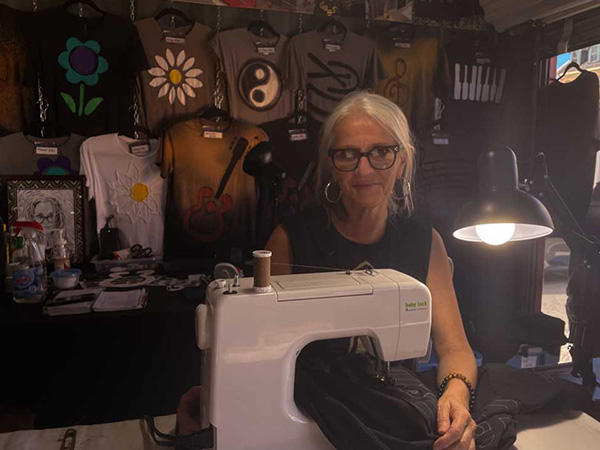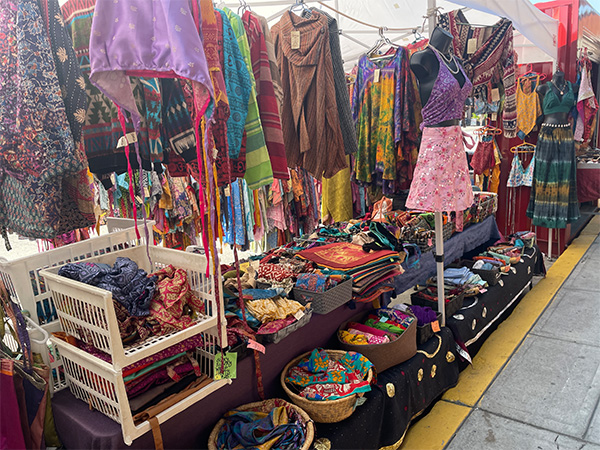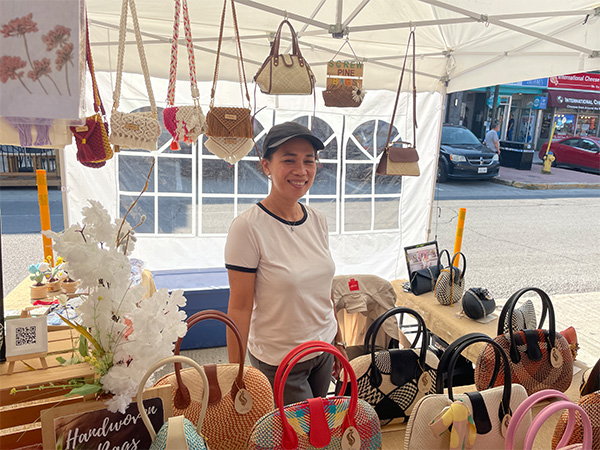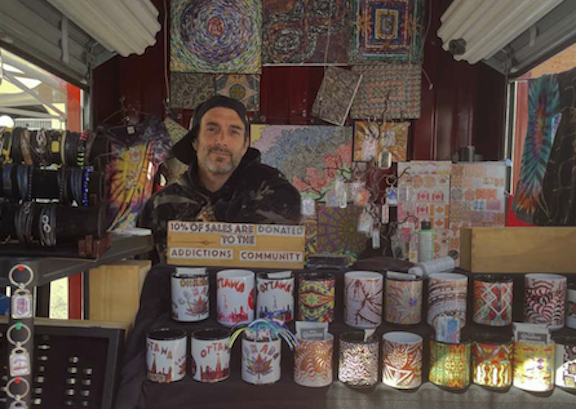The ByWard Market will close for the winter at the end of October, leaving more than 250 temporary vendors to find alternative — and often creative — ways to make a living until it reopens next May.
The historic downtown market dates back to the construction of the Rideau Canal in 1826. It has functioned as a community hub, a staple of Ottawa’s economy and a huge modern-day tourist draw. Seasonal vendors attract a stream of customers from May 1 to Oct. 31.
Most require alternate employment during the off-season.
Roxanne Delage is a singer-songwriter and the handmade T-shirts she sells in ByWard, under the handle RaggedTs, are also sold at her music gigs.
“I’ll be playing music and travelling around in the winter time,” she told Capital Current.
Delage has been operating out of the Market for six years, and plans to return as a seasonal vendor next year.
“When it’s really busy, like during the high tourist season, it’s wonderful. It’s absolutely wonderful. It feels like a carnival. There’s excitement and food and activities. I just love it here. As far as community among the vendors, yes we are definitely a family here. We look out for each other and help each other as much as we can,” Delage says.

Occasionally, given enough foot traffic, vendors are able to make a livable income for the whole year based on sales in the ByWard Market.
Jonathan McAdam is the founder and owner of StArt ArtZ Inc., and has been selling his handmade art in ByWard for nine years. McAdam says that his off-season employment is dependent on his sales during the market season.
“Sometimes if the season’s not great, then I’ll do like some Ubers or some Lyfts or something like that,” he says. He has also worked with one of the residential treatment centres in Ottawa, doing an art therapy program and helping to supervise the residents.
“A few years back, I did really, really well with sales [in the market],” says McAdam. “I went out west for three-and-a-half months and lived in my car and just kind of decompressed.”
The temporary nature of ByWard’s outdoor market ensures that the part-time employees for vendors know they’ll be looking or other work or activities at season’s end.
Tempol employee Kaélie Deschênes, who has worked for the long-time vendor for the past two years, has to find another job when she goes back to university in February.
“By the time I’m done working here in the beginning of October, I feel like most places aren’t really looking to hire anymore,” she says. “So yeah, it does make it a little bit more complicated to find a job.”

Analisa Lumontod, whose small business is called Sining, also works at a hospital in Ottawa. She sells eco-friendly, handmade bags manufactured with natural fibers.
“Actually, I have another job, but I’m trying to make this my main source of income,” she says. “I mean, I’ve been working for 20 years. I want to work for myself this time.”
She will continue to work at the hospital after she closes shop on Oct. 31, when her ByWard seasonal vendor’s pass expires.

The ByWard Market is Ottawa’s most famous market; however it is one of several within city limits. These markets provide space for many creatives, farmers and vendors to sell their goods and to increase tourism and strengthen the economy of their communities.
What about the market’s future?
In the wake of the COVID-19 pandemic, Ottawa experienced a steep decline in international and domestic tourism. As tourism contributes billions to the city’s economy, the decrease in visitors weighs heavily on local businesses.
“They need to do something, because businesses help the economy, right? So if they want the businesses to continue, they need to do something to attract people,” Analisa Lumontod says.
To combat this decline, government and non-governmental organizations have published multiple documents about the economic and cultural decline of ByWard and downtown Ottawa.
These include the New Official Plan of Ottawa, which aims “to reinforce the economic, cultural and social importance of the ByWard Market,” as well as the ByWard Market Public Realm Plan, which proposes changes to ByWard’s infrastructure to better accommodate pedestrian visitors.




